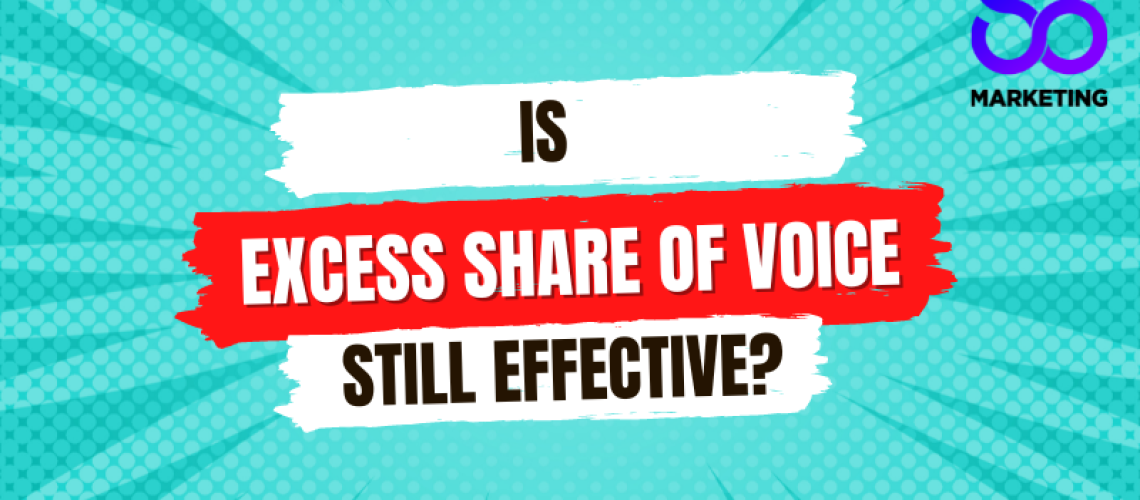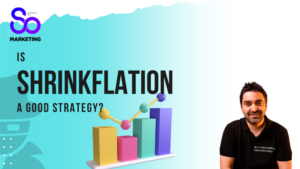Excess share of voice (ESOV) is one of the most used planning frameworks in marketing. It was developed in the 1990s by John Philip Jones to determine the right amount of marketing spend linked to the overall business growth objective.
The question is, does this framework still hold in today’s marketing context?
Here I examine the validity of the framework and what else we should consider when it comes to marketing planning.
Defining Share of Voice and Share of Market
Let’s explore the concept by starting with a few definitions.
Share of Voice (SOV)
Firstly, what is Share of Voice?
Share of Voice (SOV) is a metric that determines a brand’s relative share of the advertising space in its category. It is calculated by looking at the total spend in the category divided by the % spent on your brand.
For example, if there were ten chocolate brands with an annual total spend of £100 million a year. If Brand A spends £10 million, it effectively has a 10% Share of Voice.
Share of Market (SOM)
The second concept is the Share of Market. This business metric looks at the % market share a brand has relative to it’s competitors. So Brand A (above), with their £10 million spend (of a total pie of £100 million in the category), will likely have around 10% market share.
Of course, in the example above, you would have noticed that the Share of Voice and the Share of Market are the same at 10%. This is no coincidence, as according to Jones, an equilibrium law exists that these two metrics will eventually equal the same over time.
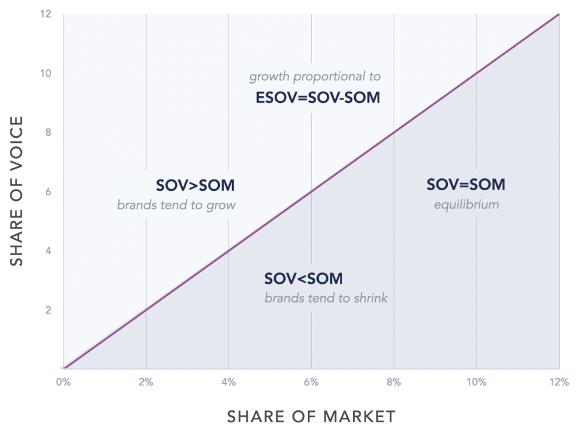
This is a fundamental principle with wide-reaching implications for marketing.
You see, if you were a challenger brand, for example, and wanted to increase your market share.
Than you need to overspend on your share of voice, which in turn and over time, would increase your market share.
By how much? Well, the general metric for return on this overspend: for every 10% ESOV, brands can expect average market share growth of 0.5% annually.
It made marketing planning predictable and efficient. For example, take a look at the diagram below.
Planners could assess where a brand stood in the market and determine the ‘spend strategy’ to increase a business’s commercial outcomes. It’s like you could almost plug and play.
Tell me how much market share you want, and I can tell you what you need to spend and over what period.
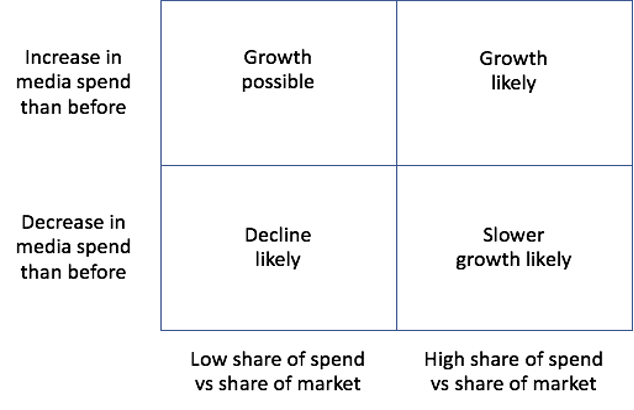
A framework right for the time
Does this still hold?
Well, the jury is certainly out and becoming more sceptical. But it’s essential to understand the context as to why.
When ESOV was developed, the media landscape was far less fragmented than it is today. Marketers were limited in their channels, essentially mass marketing channels such as TV, Radio and Outdoor.
This meant there was a level playing field across the industry where competitors were all fighting for relatively the same ad space.
But it came at a distinct advantage in that there was minimum channel nuance, and therefore the more you spent on the same channels (as your competitors), the more you could get one up on them. Makes sense.
Today, things are way more complicated to the point where we must scrutinise the framework carefully.
Professor Karen Nelson-Field related the situation to a “multi-faceted rubric cube” where things are more ambiguous.
I would agree, particularly as research conducted by her and others, has brought new information we must consider.

What is clear is that the traditional ESOV model did not heed any real consideration to ‘how’ and ‘where’ you spent your marketing budgets and only considered ‘how much’ to spend. Today, with mounting number of channel, creative and targeting options available, it’s abundantly clear that the former matters greatly.
Let’s look at the evidence.
Law of attention
Some seminal research has been done to increase our knowledge of the impact of consumer attention on ad recall and commercial outcomes.
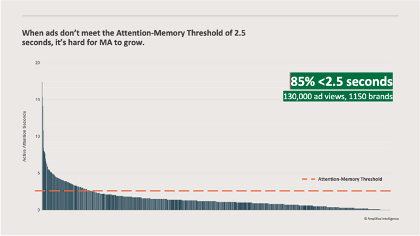
Source: Field, Wood and Nelson-Field (2022)
Researchers Peter Field, Orlando Wood and Karen Nelson-Field developed a theory known as the Attention-Memory Threshold, which states that for an ad to have any sort of effect, it must be viewed for at least 2.5 seconds.
In a world where advert lengths have increased beyond the traditional 30-second advert, you would think this would not be a problem, right? Well, wrong! The vast majority of adverts, over 85%, do not achieve this threshold.
These findings have been reinforced by studies conducted by Lumen, which found that the longer the advert is seen, the more likely, it will be remembered and bought.
In addition, we can see the conversion levels gradually increase based on how long someone has seen the advert.
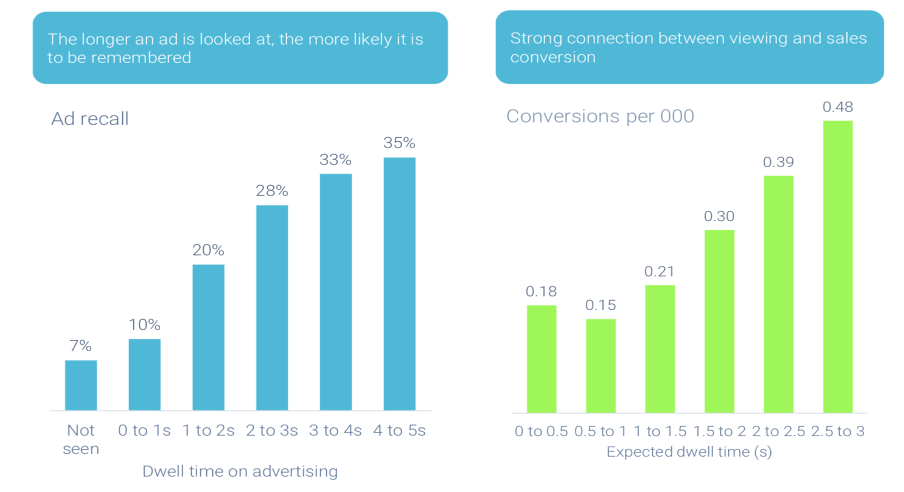
Source: https://www.lumen-research.com/blog/p653k3atys5ubp58jcydxoyn0d0wik
Law of creativity
Now, it’s instinctive to think that the more creative an advert is, the more likely someone will sit through it, it be remembered and finally bought. And you wouldn’t be wrong in this area as there is much evidence on the relationship between creativity and impact.
Let’s take the work done by Les Binet and Peter Field to highlight this. They have demonstrated that when campaigns exhibit emotion (a proxy for creativity), they achieve a 2x profit and efficiency.

Source: Les Binet and Peter Field
To reinforce this, let’s turn to data from the IPA, which shows similar results. Again, there appears to be a relationship between a fall in advertising effectiveness and the rise in short-termism in advertising, which is more performance-driven (and less creative).

Source: IPA
Law of channels
Here, we begin to move away from intuition and into the actual evidence. You would have thought that a great creative would be great regardless of what channel it’s viewed on, right? Well, not quite.
The work conducted by Karen Nelson-Field shows us that the channel in which a creative is viewed has the most significant effect on viewability, which she terms ‘channel elasticity’.
This means that no matter how good your creative is, if seen on specific low-attention channels, it will only ever achieve a certain level of attention compared to high-attention media.
This has significant implications for marketers as they must opt for high-attention channels over low ones.
Now to help discover where different channels sit in this spectrum, let’s look at some research by Lumen on viewability %s by channel.
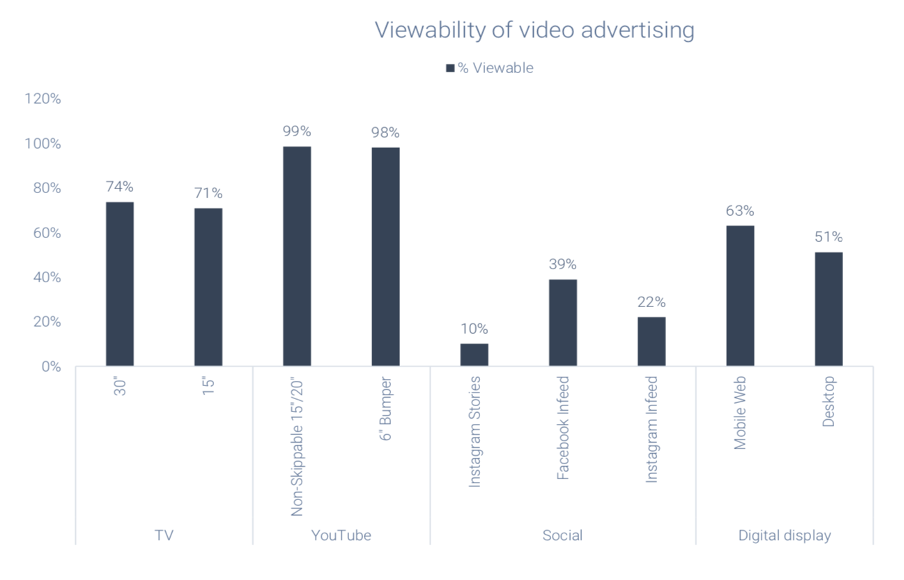
Source: https://www.lumen-research.com/blog/p653k3atys5ubp58jcydxoyn0d0wik
It shows us that TV and platforms like Youtube deliver us high levels of viewability compared to social media channels like Facebook and Instagram.
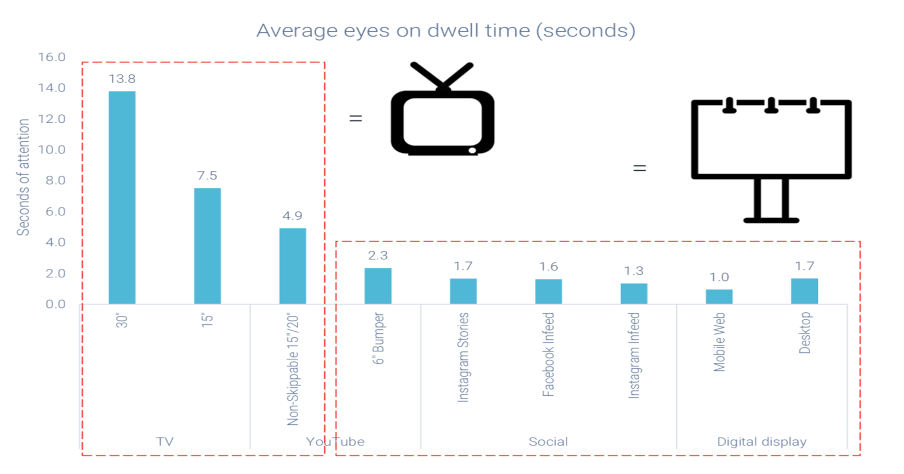
Source: https://www.lumen-research.com/blog/p653k3atys5ubp58jcydxoyn0d0wik
Other evidence from Lumen shows us the average dwell time by channel, reaches a similar conclusion. Generally speaking, social media feeds can be considered low-attention channels, whilst channels like TV are high-attention channels.
Part of the reason for this variance has got to do with the way different channels garner attention. Karen Nelson-Field describes it as active vs passive engagement. Here we see the difference between what digital platforms suggest is an impression (someone viewing the ad) and what is happening.
Surprisingly, only around 17% of adverts on digital platforms pass the 2-second threshold discussed earlier, whilst advertisers pay for around 70% of the adverts served. So whilst you think you’re getting a cheap CPM (cost per thousand impressions) on your ad campaign on digital, you can see that you’re paying almost triple what is reported!
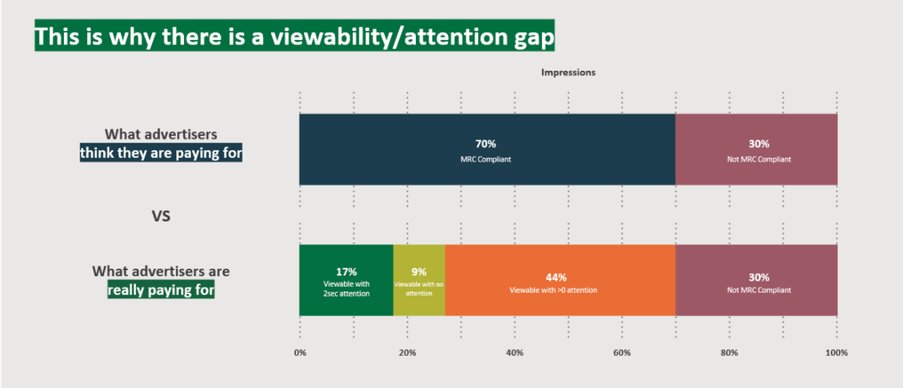
Source: Field, Wood and Nelson-Field (2022)
Law of creative and channels combined
New research by Field, Brittain and Nelson-Field and published by the Advertising Council of Australia, show for the first time how the combined power of channel and creativity can supercharge effectiveness.
Their key findings in this regard are as follows:
- The competitive advantage delivered by vital creativity is enhanced by investment into high-attention media platforms, with high-attention media supercharging the attention levels of great creatives by up to 75%.
- The business impact of marketing campaign investment increases by 65% when a creative solid is placed on high-attention media.
So in effect, we must combine high creativity and attention channels to get the best out of our marketing efforts. In addition, context plays a highly significant role.
Converse is happening in the industry
Knowing what you know now, consider what is happening in the industry. Unfortunately, most marketers are doing the opposite!
Marketers are heading for the perceived cheaper digital channels to drive low-cost acquisition.
However, the costs per attentive second show that they are, in fact, far more expensive than we realise. They also deliver a double whammy in that most people passively view the channel, reducing the advert’s effectiveness.
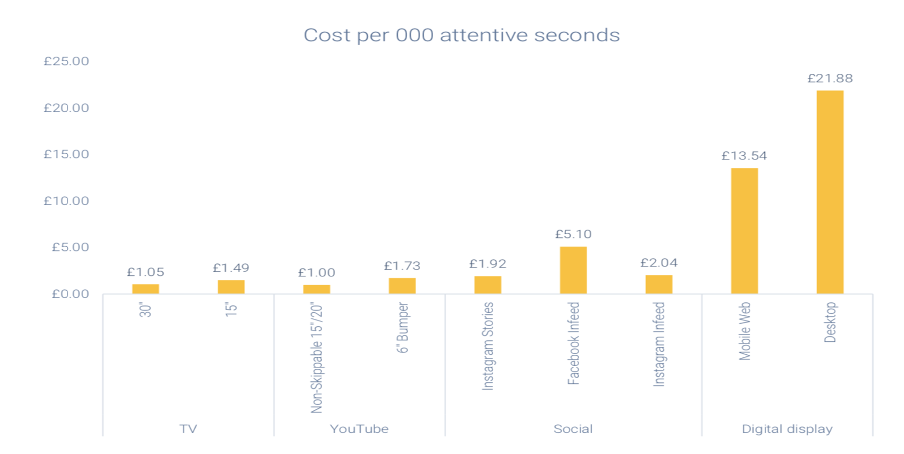
Source: https://www.lumen-research.com/blog/p653k3atys5ubp58jcydxoyn0d0wik
It’s neatly summed up by co-author Rob Brittain: “Higher-attention media platforms may come at a cost, but given their greater effectiveness, you get what you pay for and then some. It is a false economy to spend a more limited budget on lower-attention media channels just because they are cheaper. The evidence suggests they are not cheap enough,”
Advert frequency
Another finding that drives this point even further is around advertising frequency. Now, to this point, we have focussed on delivering an advert frequency that balances effectiveness and fatigue, summed up by the concept of diminishing returns.
But if we look at it through the lens of high vs low attention channels, we see things in a slightly different light.
Nelson-Field found that when an advert is placed on high-attention channels, the frequency to achieve higher degrees of re-call and action is lower than on low-attention media.
Think about it, let’s take hearing your favourite podcast host rave about a specific tool or product a few times during an episode. You are likely to remember it with just one placement. However, if you see the same product advertised repeatedly on your Instagram feed, you will likely skip over it again and again.
So, in reality, investment using highly creative work in a high-attention channel will deliver you more efficient results over the long term as you will need less message frequency.
Summary
So the question of whether ESOV is still relevant. Well, according to Field, Brittain and Nelson-Field,
“ESOV remains a critical marketing planning metric. Positive ESOV improves the effectiveness of both lower- and higher-attention campaigns.” To hear more from them on this topic tune into their conversation with WARC.
I agree with their assessment. There is no doubt that having a big marketing budget and overspending your competitors is certainly a way to win market share. The real gem is that the studies above give us a good indication of ‘how’ and ‘where’ to actually spend the budget to maximise the effect that it has.
So a big vote of appreciation to the researchers and organisations named above, and so many more. Their contributions have helped uncover new information that leads us to gain additional depth to existing theories that lead to more effective marketing practise.

